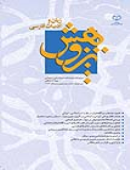تأملّی در کاربرد اصطلاح "تشبیه و تنزیه" در متون ادبی ـ عرفانی فارسی
محورهای موضوعی : پژوهشهای ادبیات کلاسیک ایران
1 - ادبیات و علوم انسانی
کلید واژه: تشبيه و تنزيه شعر فارسي ابن عربي ادبيات عرفاني,
چکیده مقاله :
«تشبيه و تنزيه» از جمله اصطلاحات عرفاني است كه در حوزه هايي مانند ادبيات، تفسیر، كلام و ملل و نحل نيز مورد توجه است. اين دو اصطلاح در نشانهشناسي زبان عرفاني از حيث ساختار در رديف «اصطلاحات زوجي» قرار مي گيرد. كاربرد اين دو تركيب در كنار هم بعد از ابن عربي رواج بيشتري داشت. وي با بيان نظريه خويش، اعتقاد به تشبيه و تنزيه را در مسيري تازه افكند كه بعدها بسياري از عرفا و ادباي انديشمند تحت تأثير نظريه و تفكّر او قرار گرفتند. در اين مقاله سابقه كاربرد اين دو اصطلاح در شعر و ادب فارسي و متون مختلف بررسي ميشود. بيان ارزش و اهميّت اين دو اصطلاح به عنوان يكي از موضوعات بحث انگيز در دوره هاي مختلف، بررسي سير تحولات معنايي و گستردگي قلمرو كاربرد اين دو واژه در متون گوناگون از اهداف ديگر اين مقاله است.
“Positive theology and negative theology” are common mystical expressions literature, interpretation. These two expressions are categorized as “collocations” in the semiotics of mystical expressions. After Ibn-Arabi, these two terms became more common. Once he offered his theory, belief in “Positive theology and negative theology” found a new path; and later on several mystics and scholars were influenced by his theory and thought. This essay intends to survey the historical record of the function of these two expressions in the Persian poetry, literature and other texts. Stating the value and significance of these two expressions as a controversial topic in different eras, survey of the conceptual transformation and functional domain of these two words are the other goals pursued through this article.


